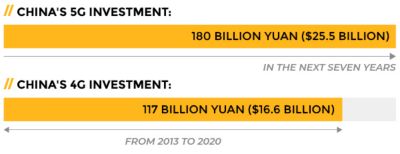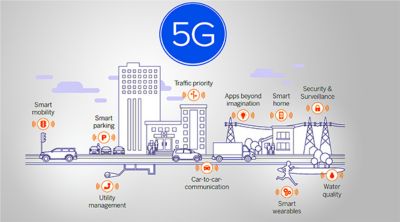-
-
Access Free Student Software
Ansys empowers the next generation of engineers
Students get free access to world-class simulation software.
-
Connect with Ansys Now!
Design your future
Connect with Ansys to explore how simulation can power your next breakthrough.
Countries & Regions
Free Trials
Products & Services
Learn
About
Back
Products & Services
Back
Learn
Ansys empowers the next generation of engineers
Students get free access to world-class simulation software.
Back
About
Design your future
Connect with Ansys to explore how simulation can power your next breakthrough.
Free Trials
ANSYS BLOG
August 19, 2020
China 5G: Trend Analysis and the Value of Simulation
5G promises a spectacular world of communications systems that present lucrative opportunities in various industries. The engineering challenges behind 5G are daunting, but 5G has been recognized as a core technology of the future — a transformational technology. As such, governments, private industries and academia are investing heavily in 5G. In China, the race to bring 5G to the mass market is well underway.
China's 5G Technology: Transformation and Opportunity
The Ministry of Industry and Information Technology (MIIT) of China officially marked the first year of commercial 5G by licensing China Mobile, China Telecom, China Unicom and China Broadcasting to start operations on June 6, 2019.
According to AI Core World (English translation), several leading operators in China will invest 180 billion yuan ($25.5 billion) in 5G construction in the next seven years. In comparison, 117 billion yuan ($16.6 billion) was invested in 4G from 2013 to 2020. It is expected that the 5G market will reach 100 billion yuan ($14 billion) by 2022.
Clearly, 5G will make an enormous impact on economic growth. According AI Core World, 5G could expand the economy by a trillion yuan in five to 10 years, and its industry benefits could last 10 years or more.
It is estimated that the 5G industry will contribute up to 5.8% of China’s GDP by 2030. Internationally, 5G will also be a high-profile emerging industry with tremendous influence. Leading manufacturers are racing to lead in 5G technology.
With the arrival of 5G, Ansys has prepared a range of solutions for market players. It will help industry users explore the potential of these software applications to improve product development, product ecosystems and community/technology support.
5G Challenges and Key Technologies
5G is expected to usher in a number of new applications and business scenarios, such as:
- Ultra-wideband media (8K video).
- Autonomous driving.
- Telemedicine.
- Public service and security.
- Smart cities.
- Smart grids.
These are just some of the many areas 5G will support. In general, these applications will fit into three categories:
- Enhanced mobile broadband (eMBB), such as 8k video and virtual/augmented reality (VR/AR).
- Massive machine type communication (mMTC), such as the internet of things (IoT), smart cities, smart homes and industrial applications.
- Ultra-reliable and low latency communication (uRLLC), such as telemedicine and autonomous driving.
To realize these diverse application scenarios, key technology challenges have to be addressed.
- High frequency: Depending on different standards, 5G devices may work in millimeter-wave bands. This would create specific technology challenges, including difficulties in development, stringent design/processing requirements and minimal design calibration at late stages of development.
- High data rate: Massive data communication demands ultra-fast chips and circuits. This could lead to a range of problems like thermal reliability, signal integrity and electromagnetic compatibility. These issues should be fully considered and solved in the early design phase.
- Highly reliable application scenario: From chip to circuit to wireless communication, base station and edge cloud computing, human safety-critical applications require system design with extremely high reliability and safety. Two aspects of reliability are hardware and software. Factors influencing hardware reliability include heat dissipation, weatherproofing, lifespan and human-machine interaction. The software ecosystem includes security, the user interface and decision-making systems.
- Large scale and form factors: 5G product manufacturers want to create solutions that are affordable and easy to maintain. They should be explored and optimized at an early design stage.
To better address these technology challenges and find optimal solutions during the critical design stage, manufacturers can turn to simulation. After decades of rapid development, modern simulation technologies have evolved into simulation systems that form an integrated ecosystem. Various simulation technologies from Ansys work together seamlessly to provide solutions. This makes them an ideal choice for teams working remotely to solve technology problems early in the design stage.
5G Industry Ecosystem
The 5G industry ecosystem consists of three layers: the equipment ecosystem, system ecosystem and application ecosystem.
The equipment ecosystem is a layer viewed from the perspective of the equipment supply chain. For example, the supply chain of a primary wireless equipment supplier includes a range of devices like antennae, circuits, connectors, power amplifiers and chips, which make up the equipment ecosystem.
The system ecosystem represents the logical layers of a 5G system. For example, 5G communication systems include operators, core networks, base station coverage, edge computing, terminal devices and network management. These tools form the functional ecosystem of 5G communication system.
The application ecosystem includes the tools seen from the perspective of the end user. It may include entertainment, TV, medical, industrial, smart grid and smart city application systems. With their own features, supply chains, customers and operation models, each of these applications can live as a relatively independent ecosystem that relies on the core 5G infrastructure and ecosystem.
The construction of these 5G systems are made less challenging by using simulation to improve efficiency, effectiveness and development.
The 5G Technology Industry Chain
The 5G industry chain consists of upstream and downstream parts.
The upstream mainly includes network planning, primary wireless devices and transmission devices. Among them, primary wireless devices face fierce competition that requires large investments during early stage deployment.
The downstream mainly includes terminal devices and operators. Terminal devices include handsets, smartphones, smart watches, smart glasses, IoT terminals and other computers. Telecom carriers with 5G commercial licenses operate a 5G network.
As the demand for 5G infrastructure construction grows, demand for 5G network equipment will also increase. As a result, industry players see opportunities and room to grow. During the early stages of 5G network deployment, primary wireless devices will be the most lucrative components in the 5G industry chain.
Similarly, the demand for interconnections and terminal devices will increase. For example, replacing an existing handset with a 5G handset will drive that corner of the market. Gartner predicts 5G handsets will account for over 50% of the mobile phones shipped in 2023. For this reason, leading handset vendors are racing to deploy their technology and win the market.
In addition, a variety of terminal applications will be developed for IoT devices. Of course, terminals are downstream and rely on a deployed network. Therefore, their deployment will appear later than the network itself. But they are complementary and interdependent. Terminal devices also face the technological challenges of working with high frequencies, high bandwidths, high data rates and multiple modes.
With large areas of the 5G ecosystem still being explored, this is only a glimpse into the market. Many more applications will be created and discovered by users.



